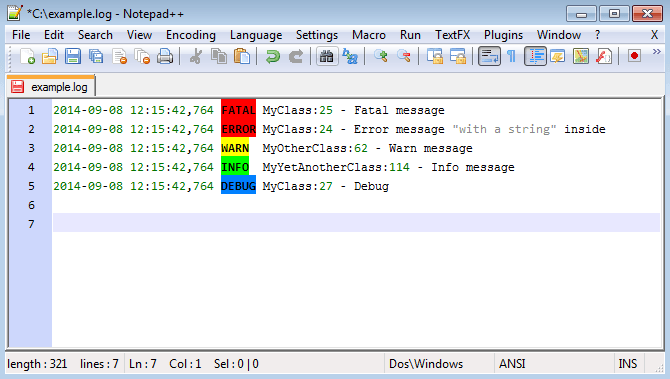[This article is part of our Popular articles project to updatePerl.com for contemporary practices]
Mac OS X already has Perl installed. Open a Terminal application (in the Utilities folder of your Applications folder) and run perl -v to find out which version. ActiveState Perl has binary distributions of Perl for Mac OS X. This is the simplest way to install the latest version of Perl. Download ActivePerl. Perl Macos Catalina; Perl For Mac Os. Perl For Mac Os X OpenBSD Downloads. Install Instructions. Post navigation Navigation. Malware Removal Tools For Mac. Myhomelib For Mac Os. Search for: MOST POPULAR ARTICLES: Applecare Protection Plan For Mac Mini: Rtl8187 For Mac: Mac Os X For Dell N5110: Age Of Empires Hd For Mac.
If you’re reading this article, you’re likely looking for a simple wayto download and install the Perl programming language. Or you alreadyhave Perl installed as part of your operating system, but it’s olderthan the currently-supported versions (5.32.1 or 5.30.3) and you’dlike to use the latest and greatest features. The downloadoptions may seem daunting, especiallyif you’re new to computers or programming. We’ll take things step bystep, and soon you’ll be on your way to writing your first Perlprogram.
A word of warning, though: Several of these steps (and usually Perlitself) require using your computer’s command-line or terminalinterface.
The first step: Download pre-built
If you’re getting started in Perl development, you may only need apre-built binary distribution. Further on, though, you might want toconsider building your own, especially if you need to juggle differentversions to support different environments or want to use a laterversion than is available pre-made.
For now, though, let’s consider the pre-built options. You haveseveral, depending on what computer operating system you’re using.
Microsoft Windows

The two main “flavors” of Perl for Windows areActiveState Perl andStrawberry Perl. Which one you choose dependson what you plan to use it for.
ActiveState provides afree community edition of ActivePerllicensed only for development purposes. If you intend to docommercial work or want technical support beyond community forums, you’llneed tosubscribe to a team plan or higher.

The free community edition is also 64-bit only, and as of this writing, onlythe earlier versions 5.28 (2018) and 5.26 (2017) are available, with anexperimental 5.32 (2020) release licensed for any purpose. The latter isalso currently only installable via the Windows command line; earlierversions use a standard Windows setup wizard.
Strawberry Perl is a Perl environment forWindows that strives to be as close as possible to Perl on Unix and Linuxsystems, where the language got its start. Besides the Perl binaries, italso includes a compiler, related tools, external libraries, and databaseclients. This is important as many modules for extending Perl’sfunctionality need a compiler. It’s also available in both 64-bit and32-bit editions of the current 5.32 version.
What do I recommend? There’s no escaping Perl’s Unix heritage, so you’llhave an easier time with Strawberry Perl. That said, if you think you’ll betaking advantage of ActiveState’s commercial offerings of support and theirActiveState Platform formanaging different language runtimes, you may want to give them a try.
Windows also has two Linux-like environments in the form ofCygwin andWindows Subsystem for Linux.Follow the Linux directions below to install Perl in one of these.
There is also the Chocolatey package manager forWindows, which provides an option for installing either ActiveState orStrawberry Perl.
Apple macOS
macOS comes with Perl pre-installed: version5.18 (2013) on macOS Catalina 10.15 and 5.28 (2018) on Big Sur 11. But,Apple has said that scripting language runtimes are deprecated,and are only “included … for compatibility with legacy software.” Youshould consider installing your own.
Like Windows, ActiveState has afree community editionfor developers. The Windows caveats above apply, except for a current Perlversion 5.32—it’s “coming soon” as of this writing.
Your best bet is to install the Homebrew package managerin the macOS Terminal application (afterinstalling its requirements),and then issue the command brew install perl. This will install the latestversion of Perl, as well as give you instructions for making sure thatinstalled Perl modules stay that way across updates by Homebrew.
Linux or another Unix-like system
Like macOS, most Linux and Unixsystems come with Perl pre-installed, or installable using the operatingsystem’s software package manager. Also like macOS, these are usually olderversions provided for compatibility with other software provided by theOS.
To install your own on Linux, you cango the ActiveState routeas above, or also use theHomebrew package manager. There areseveral requirements to install first,and then you canfollow the directions for installing Homebrew and issuethe command brew install perl.
For other Unix systems with an older version of Perl, I’m afraid you’re goingto have to build from source as detailed below.
Next steps: Building your own with perlbrew or plenv

Perl’s source code (the instructions that build a program) is freelyavailable and compiles on over 100platforms. You can downloadit directly and build a versionyourself, after installing any prerequisite packages used to buildsoftware on your operating system (see below). However, most Perldevelopers choose to use a tool to automate that process and managedifferent versions of Perl side-by-side. Enterperlbrew.
Perlbrew requires an already-installed system version of Perl, but itcan be as old as 5.8 (2002), which should cover most Linux and Unixsystems in use today. Once you’ve installed your operating system’sbuild tools and followed the directions on the perlbrew homepage, typing perlbrew install 5.32.1 followedby perlbrew switch 5.32.1 will install and switch to the latestversion of Perl as of this writing. Installing older versions of Perland switching between them use the same steps, e.g.:
I use an alternative, plenv,which uses a different mechanism to manage versions of Perl using the bashcommand shell. It also enables you to use different versions of Perl dependingon which file system directory you’re working in. It’sset upusing either Homebrew or git.
Windows users have the option ofberrybrew, which acts much likeperlbrew for Strawberry Perl with slightly differentoptions.
Building from the source directly
If you feel you don’t need to manage multiple installations of Perl or youwant to do things old-school, you can always download and build directly fromthe source code. Select “Download Latest Stable Source” from thePerl Download web page, thenunarchive itinto a directory.
You should always check the included README files for information on how tobuild on your system; there’s a generic one as well as specific READMEs forvarious platforms (README.linux, README.macosx, README.win32, etc.).Note that the README.macosx document applies to current versions of macOS,which was previously called Mac OS X; README.macos is for the “Classic”Macintosh operating system, unsupported since 2004.
On most Unix-like systems (including macOS), you can then configure, build,test, and install Perl by issuing the following commands:
Activeperl 5.16.3
This will build Perl with all default options for your system and install itin the /usr/local directory.
Up and running
Regardless of whether you’ve chosen to install a pre-built package or rollyour own, you should now be able to issue the following at your command line:
Perl64 Windows
…and receive a reply that looks something like this:
Perl Download Windows 10

Activeperl Download
Congratulations, you’re now using the latest version of Perl on your computer!Now head on over to Perl.org and start learning!